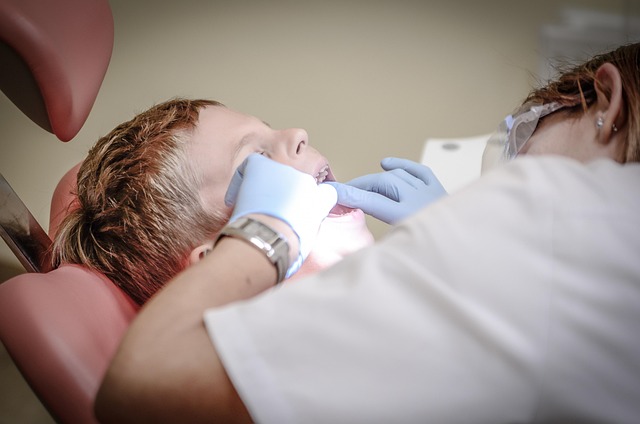Discover the Future of Dental Implants: Innovative Screwless Solutions
If you’ve been considering dental implants but found the costs challenging, there’s encouraging news. New screwless dental implant options are emerging as a comfortable and efficient alternative for many patients. These advancements are helping make dental restoration more convenient and potentially more affordable for a wider range of people.

Dental implant technology has transformed significantly over the past decade, with screwless systems emerging as a compelling alternative to conventional implant designs. Understanding these innovative solutions can help patients make informed decisions about their oral health restoration needs.
What Are Screwless Dental Implants?
Screwless dental implants utilize alternative attachment mechanisms instead of traditional screw-retained crowns or bridges. These systems typically employ cement-retained restorations, magnetic attachments, or specialized locking mechanisms to secure the prosthetic tooth to the implant fixture. The implant itself still requires surgical placement into the jawbone, but the final restoration attachment differs significantly from conventional screw-retained designs.
These systems eliminate the need for access holes in the crown surface, which are typically required in traditional screw-retained implants. This design modification can result in improved aesthetics, particularly in the front teeth where visible access holes might compromise the natural appearance of the restoration.
Why Are Screwless Implants Becoming a Popular Choice?
Several factors contribute to the growing popularity of screwless implant systems among both patients and dental professionals. The elimination of screw access holes creates a more natural-looking restoration, especially important for front teeth where aesthetics are paramount. Patients often report improved comfort since there are no screw components that might loosen or cause irritation.
Maintenance procedures can be simplified with certain screwless designs, as patients don’t need to worry about screw loosening or the potential for food debris to accumulate in access holes. Additionally, some screwless systems allow for easier removal and replacement of restorations when necessary, which can be beneficial for long-term maintenance and adjustments.
How Do Screwless Implants Work?
The functionality of screwless implants depends on the specific attachment mechanism employed. Cement-retained systems use dental cement to bond the crown or bridge directly to an abutment connected to the implant. This creates a permanent attachment that eliminates the need for screws while maintaining strong retention.
Magnetic attachment systems utilize small magnets embedded in both the implant abutment and the prosthetic restoration. These systems provide secure retention while allowing for removal when necessary. Some advanced screwless designs incorporate specialized locking mechanisms or friction-fit connections that provide reliable attachment without traditional screw components.
Are Screwless Implants Suitable for Everyone?
While screwless implants offer numerous advantages, they may not be appropriate for all patients or clinical situations. Factors such as bone quality, implant location, and individual oral health conditions influence the suitability of screwless systems. Patients with adequate bone density and healthy gum tissue are generally good candidates for these innovative solutions.
Certain clinical scenarios, such as cases requiring immediate loading or complex multi-unit restorations, might be better suited to traditional screw-retained systems. A thorough evaluation by a qualified implant dentist is essential to determine the most appropriate treatment approach for each individual case.
Comparing Screwless Dental Implants Prices
The cost of screwless dental implants varies significantly based on several factors, including geographic location, practitioner experience, and specific system requirements. Understanding typical pricing ranges can help patients budget appropriately for their treatment.
| System Type | Provider Examples | Cost Estimation |
|---|---|---|
| Cement-Retained | Straumann, Nobel Biocare | $3,000 - $5,500 per tooth |
| Magnetic Attachment | Locator Systems, Zest Anchors | $3,500 - $6,000 per tooth |
| Friction-Fit Systems | Custom Laboratory Solutions | $4,000 - $7,000 per tooth |
| Complete Treatment | Various Specialists | $15,000 - $30,000 full mouth |
Prices, rates, or cost estimates mentioned in this article are based on the latest available information but may change over time. Independent research is advised before making financial decisions.
Additional costs may include preliminary procedures such as bone grafting, sinus lifts, or gum treatments, which can add $1,000 to $5,000 to the total treatment expense. Insurance coverage varies widely, with some plans covering a portion of implant treatment while others may not provide coverage for elective procedures.
Screwless dental implants represent an exciting advancement in restorative dentistry, offering patients improved aesthetics, comfort, and functionality compared to traditional systems. While these innovative solutions may not be suitable for every case, they provide valuable alternatives for patients seeking permanent tooth replacement options. Consulting with an experienced implant dentist is crucial for determining whether screwless systems align with individual treatment needs and expectations.




